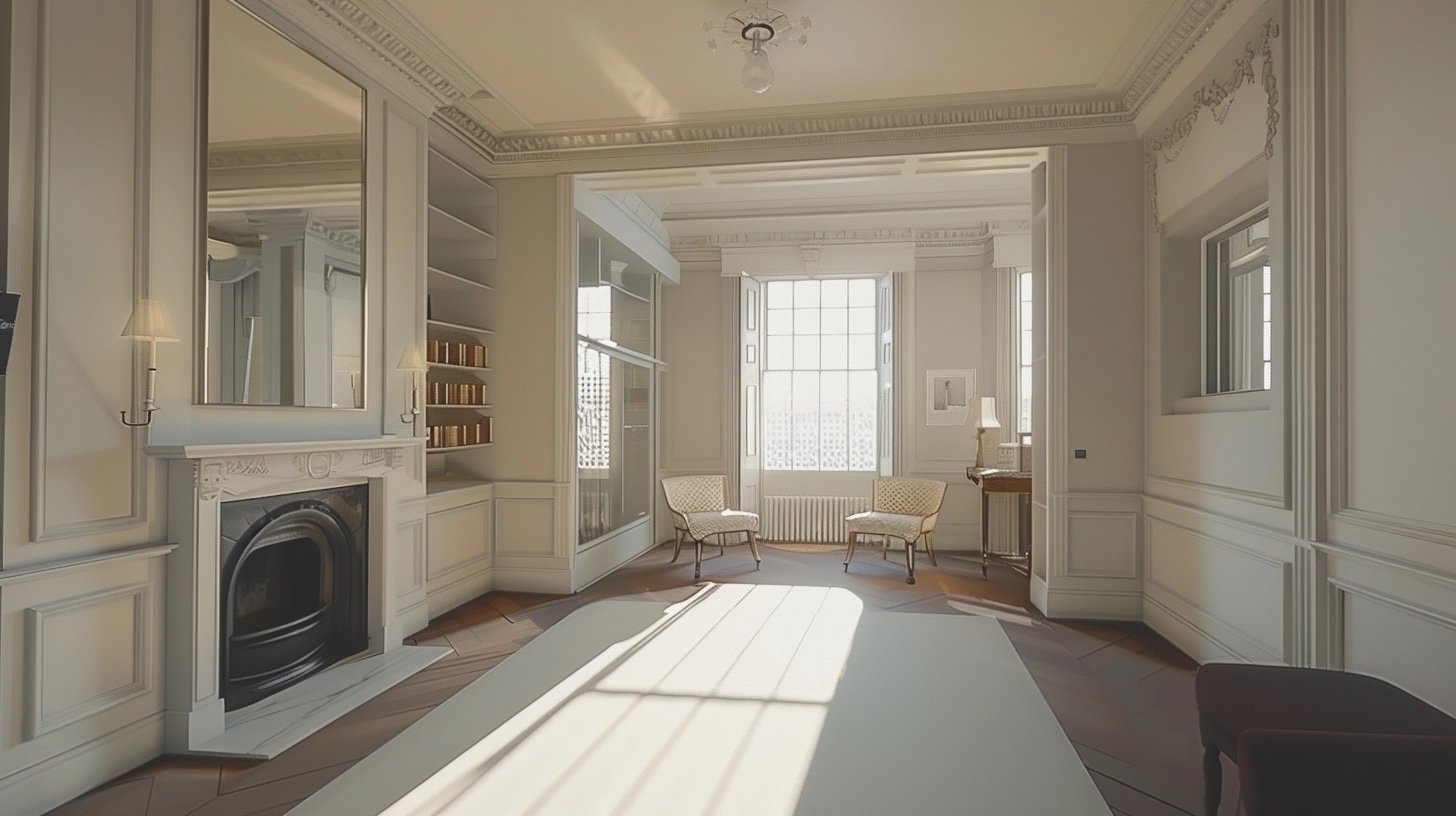In 1990, Lees Associates (now LA London) was one of the first architecture firms to ditch drawing boards, becoming an early adopter of 3D architectural software Archicad. More than 30 years on, we still use it today! In fact, it has been with the practice for longer than almost all of our team – playing a pivotal role in LA’s journey to becoming one of London's premium boutique architecture and interior firms.
The early days
When practice founder John Lees made the transition from hand drawings to CAD, he scoured the market to research all of the CAD packages available – there was no clear market leader back then. After conducting thorough research into the merits of each, he concluded that Archicad from Graphisoft was the one to go for, due to its groundbreaking integration of 3D elements and 2D drawings.
With Archicad, Graphisoft invented “BIM” (although they originally called it “Virtual Building”), and it has been integrated into LA London’s workflow ever since. It is only relatively recently, however, that others in the prime London market have started to use it. LA London Partner, Andrew Paulson has long been on a mission to increase the uptake of BIM in our market.
A key differentiator
While not the most widely used BIM package in the UK, Archicad is a market leader worldwide. Once architects have discovered it, they rarely want to revert to other software. LA London never has trouble recruiting talent with extensive Archicad experience; architects from all over the world apply to us simply because we use Archicad. It is one of our key differentiators in a competitive market!
As a result, we have built a carefully curated team of incredible architects, technicians and assistants who all have a passion for working with Archicad.
“Archicad appeals to a specific type of person who appreciates its technical completeness, precision, reliability, and design opportunities.”
Building reliable models
BIM never has and never will replace hand sketching and visualising at the early conceptual stages of projects. However, it allows us to take those conceptual sketches and quickly produce simple 3D models to help clients visualise their spaces. We can export our models to a simple viewer app (example below) that allows everyone we work with, from clients to contractors, to explore the BIM model as well as view all of the drawings that are derived from it, all in one place.
But before that, if we are working on an existing building – and in prime central London, we usually are! – we need to build an existing digital model of it. And, crucially, we have to have complete confidence that this model can be relied upon. When we’re working with historic, often listed properties, nothing is ever straight, square or level, and our models need to reflect that reality. That is where LA Surveys comes in: our need for accurate and reliable 3D survey data at the outset of our projects led to us setting up our measured surveys arm in early 2020. By capturing the 3D “point cloud” data ourselves, we have complete access to everything we need in order to build a “digital twin” of the property in question.
Collaboration and efficiency
Modelling our projects from the outset means we can share our models with other consultants, principally MEP and structural engineers. If they work in BIM too, and we always encourage them to, they can build their own MEP services or structural models around our architectural base model. Working collaboratively in one “model space” like this makes it simpler to coordinate between design disciplines: when you can walk through a scheme together and actually see elements that clash in “reality”, rather than as overlapping lines on a drawing, it is a lot easier to find solutions.
Archicad, and BIM specifically, makes us more efficient as a practice. We don’t “draw” our drawings; we build a model from which the drawings are automatically generated. If any element within the design changes – and they often do! – when we change it in the model, all the linked drawings and schedules update automatically. The margin for human error is massively reduced.
“LA London’s impressive body of work reinforces our commitment to developing best-in-class software solutions for architects and designers worldwide.”
The Future of Archicad
It won’t come as a surprise that Archicad has already started integrating AI features. It has an AI visualiser that can create inspiring detailed 3D visualisations during early stages of design. It can quickly produce design alternatives by adding details, context, and ideas to our original concept, or changing materials and finishes. Another handy tool for our kit!
An AI-generated image produced for a recent project
We have also started to employ Archicad’s embodied carbon calculator. This feature allows us to see the embodied carbon built into our designs throughout the design process so that we can consider using alternative products, materials and systems that might result in a lower overall value. This is a great example of how we are always looking to get better at what we do every day.
The next step is fully AI-assisted design and documentation, using machine learning to assist us with tasks such as design optimisation, sustainability and documentation, as well as the automation of other time-consuming tasks. This will allow us to focus more on the creative and value-adding aspects of our role as architects and lead designers.
Final thoughts
Archicad has not only shaped LA London by setting us apart in a competitive market, it has also influenced our whole operational workflow, from the initial survey through early quick visualisations from conceptual sketches, to facilitating collaboration and detailed technical coordination with other consultants, clients and stakeholders. As a market leader in BIM software, Archicad has allowed LA London to attract top talent with extensive experience in the program, ultimately contributing to our success and reputation in the industry.




